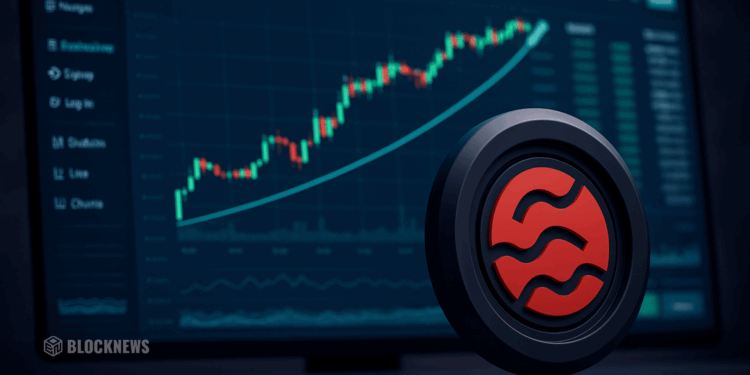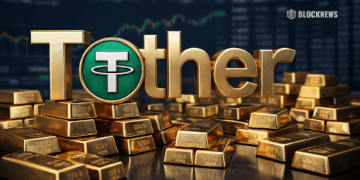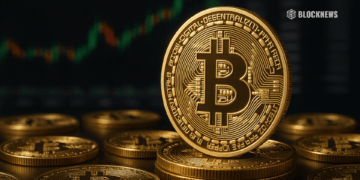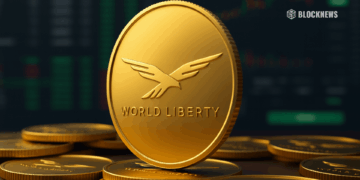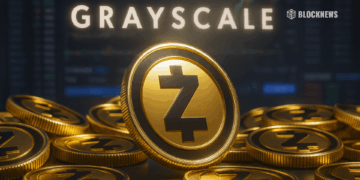- Sei blockchain positions itself as the “Nasdaq of DeFi,” delivering high speed, low latency, and a built-in order book for trading-focused dApps.
- With features like Twin-Turbo Consensus, parallel EVM execution, and IBC integration, Sei solves congestion, latency, and liquidity fragmentation issues.
- Institutional interest, ecosystem growth, and the Sei Giga upgrade could make SEI one of the most important blockchains to watch in 2025.
Sei, the self-proclaimed “Nasdaq of DeFi,” has quickly become one of the most talked-about Layer-1 blockchains in the market. Purpose-built for trading and decentralized finance, Sei combines blistering speed, parallel execution, and native trading infrastructure into a package that feels more like Wall Street than a typical crypto chain.
With its second major upgrade rolling out and institutional investors already circling, Sei is evolving from a promising experiment into one of the most important financial blockchains to watch. So, let us take a closer look at the architecture, mechanics, and momentum behind this high-performance blockchain that is turning heads across the crypto world.

What Is Sei?
Sei is a next-generation Layer-1 blockchain designed specifically for trading-focused decentralized applications. Where Ethereum, Solana, and other chains attempt to be general-purpose ecosystems, Sei narrows its scope and optimizes for performance in one of the most demanding use cases: high-frequency financial activity.
At its core, Sei offers:
- Parallel transaction execution capable of 20,000+ TPS today.
- Twin-Turbo Consensus delivering sub-second block finality.
- A native central limit order book (CLOB) embedded directly in the chain.
- Full EVM compatibility through its v2 upgrade.
- Interoperability with the Cosmos ecosystem via IBC.
This set of features gives Sei an unusual mix of speed, fairness, and accessibility, while keeping developers and users firmly focused on financial dApps, trading platforms, marketplaces, and other precision-driven environments.

Core Components
Every component in Sei’s architecture is tuned for speed, scalability, and trading efficiency. Key components include:
Twin-Turbo Consensus
This custom-built consensus mechanism is an evolution of Tendermint, designed to finalize blocks in under 400 milliseconds. It achieves this through two key innovations: intelligent block propagation and optimistic block processing. By transmitting compressed block proposals and allowing validators to process transactions before full validation, Sei slashes latency and accelerates throughput.
Optimistic Concurrency Control (OCC)
Most blockchains process transactions sequentially. Sei breaks the mold by executing non-conflicting transactions simultaneously. OCC ensures that transactions are processed in parallel unless they conflict, in which case they’re rerun in proper order. This design enables Sei to handle over 20,000 transactions per second, with plans to scale to 200,000 TPS under the Sei Giga upgrade.
Built-In Central Limit Order Book (CLOB)
Unlike other chains that rely on third-party tooling, Sei embeds a native order-matching engine directly into its protocol. This allows developers to build trading platforms with real-time execution, MEV resistance, and batch auctioning—all without reinventing the wheel. It’s a nod to traditional finance, but with the transparency and decentralization of blockchain.
Parallelized EVM Stack
Sei v2 introduced the first-ever parallelized Ethereum Virtual Machine. With full Geth integration, Ethereum-based smart contracts can run on Sei with zero friction. Developers benefit from Ethereum’s tooling while gaining access to Sei’s speed and scalability. This dual runtime also supports CosmWasm, giving builders flexibility across ecosystems.
Cosmos SDK and IBC Integration
Sei was originally built on the Cosmos SDK, enabling seamless interoperability with 50+ IBC-enabled blockchains. While the community voted in 2025 to deprecate Cosmos architecture in favor of an EVM-only future, IBC remains a powerful bridge for cross-chain liquidity and communication.
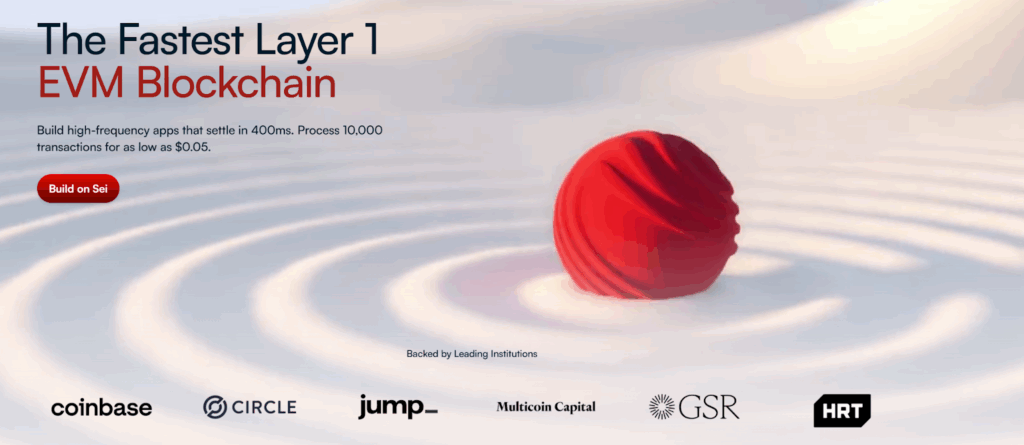
What Problems Does It Solve?
Sei tackles some of the most persistent problems in blockchain infrastructure. This includes:
- Latency – Sub-second finality enables real-time trading and gaming.
- Congestion – Parallel execution prevents bottlenecks during peak usage.
- Frontrunning and MEV – Frequent batch auctioning and native order matching reduce manipulation.
- Liquidity Fragmentation – Order bundling and built-in CLOB improve capital efficiency.
- Developer Friction – Ethereum compatibility and native trading tools streamline onboarding.
- Cross-Chain Isolation – IBC and bridges connect Sei to the broader DeFi ecosystem.
Utility and Offerings
Sei offers a range of utility and features:
- The SEI Token – SEI is the fuel that powers the network. With a capped supply of 10 billion, it serves as the currency for transaction fees, staking, and governance. A deflationary tokenomics model helps align long-term incentives for holders.
- Staking – Validators and delegators secure the network by staking SEI, earning rewards while maintaining its integrity. This also plays a role in governance, ensuring those who have skin in the game can influence decision-making.
- Governance – Holders can propose and vote on changes to protocol parameters, upgrades, and ecosystem direction, giving the community control over Sei’s trajectory.
- Transaction Fees – SEI is used to pay for network operations, keeping the chain sustainable and ensuring that participants contribute proportionally to their usage.
- Gas on Arrival – A unique offering, Sei automatically provides gas credits to bridged assets, removing the common pain point of needing native tokens to get started on a new chain.
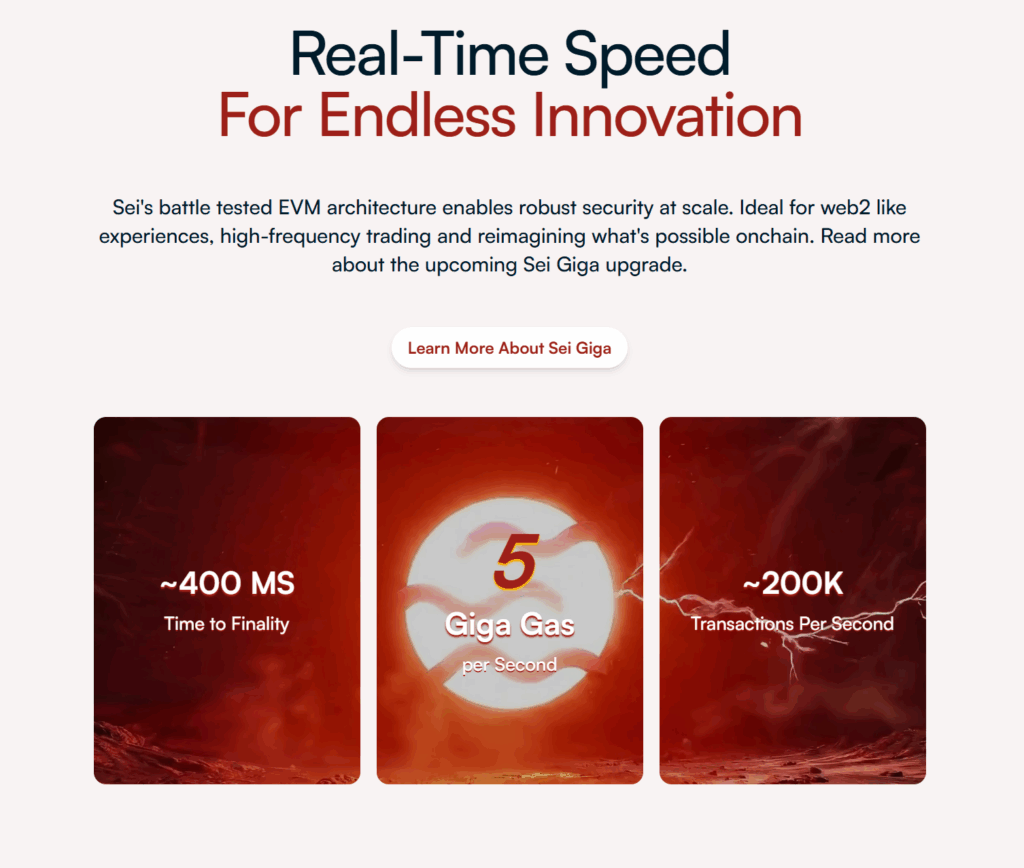
Ecosystem Highlights
Sei’s ecosystem is expanding rapidly, fueled by developer interest, institutional backing, and real-world adoption. Some key highlights include:
- DeFi and Trading – Projects like Yei Finance and Sailor.finance are building next-gen money markets and trading platforms. DragonSwap has already processed over $1 billion in volume.
- GameFi – World of Dypians and Europe Fantasy League have become breakout hits, each recording over 50,000 daily transactions. Sei’s speed and scalability make it ideal for real-time gaming.
- NFT Marketplaces – Pallet Exchange and Magic Eden offer fast, low-fee minting and trading, leveraging Sei’s infrastructure to improve user experience.
- Real-World Assets (RWA) – Protocols like Ondo Finance are exploring tokenized assets on Sei, drawn by its performance and compliance-ready architecture.
- Institutional Interest – Canary Capital’s filing for a Staked SEI ETF signals growing confidence from traditional finance. Sei was also shortlisted by Wyoming’s Stable Token Commission for its potential state-backed stablecoin.
- Developer Adoption – Major Ethereum projects like Uniswap, Bancor, Nansen, and The Graph are reportedly planning deployments on Sei, attracted by its parallelized EVM and low fees.
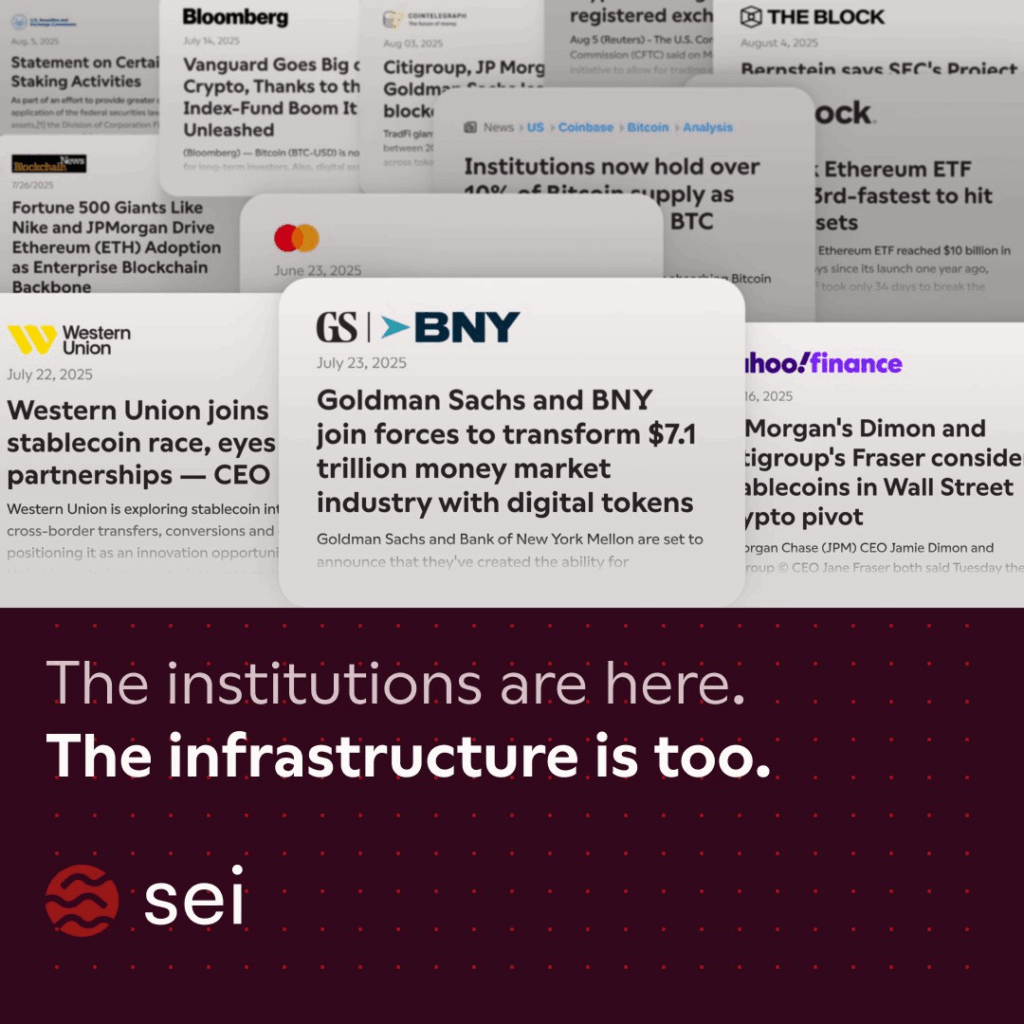
Roadmap and Plans Ahead
Looking ahead, Sei’s roadmap is ambitious and squarely focused on scaling its role as a financial backbone. Some key initiatives include:
- Sei Giga Upgrade – Throughput will expand from 20,000 TPS to 200,000 TPS, cementing Sei as the highest-performance chain in the industry.
- Unified EVM Transition – The dual Cosmos + EVM account structure will be replaced by a streamlined EVM-first model, making development and user experience smoother.
- Institutional Adoption – With ETFs and stablecoin integrations already underway, further financial instruments and partnerships with traditional players are expected.
- Ecosystem Growth – More DeFi, gaming, and NFT projects will migrate as Sei proves its scalability in live environments.
- Cross-Chain Expansion – Enhanced bridges and deeper IBC integrations will extend Sei’s reach, creating a web of liquidity across multiple ecosystems.
Final Thoughts
In conclusion, Sei has positioned itself as one of the most focused and high-performance blockchains in the market, purpose-built for speed, fairness, and financial precision. And with institutional interest building, developer adoption accelerating, and a clear roadmap guiding its evolution, it will be interesting to see how Sei shapes the future of decentralized trading and financial applications in the years to come.


